Bolivia, a country in South America, is widely recognized for its large areas of wild cacao, particularly in the regions of La Paz and Beni. These areas are where indigenous communities have been harvesting this valuable crop for generations.The World Conservation Society (WCS), an organization dedicated to environmental conservation, has been instrumental in supporting these communities in managing cacao stands and improving the harvesting and post-harvest treatment of the beans since 2003. This support has not only helped preserve traditional farming practices but has also contributed to the growth of the chocolate industry in Bolivia.
The chocolate industry in Bolivia generates significant revenue both domestically and in the international market. Bolivian chocolate has found a niche market demand, with its unique flavor profile and high-quality products attracting consumers who appreciate the distinctiveness of Bolivian cocoa. The revenue generated from the chocolate industry has a positive impact on the economy of Bolivia, contributing to the livelihoods of indigenous communities and the overall development of the country.
For example, the Tacana indigenous community in the Beni region of Bolivia has been able to maintain their traditional farming practices while incorporating modern techniques. With the support of WCS, they have established cocoa plantations and implemented sustainable farming practices, ensuring the preservation of the environment while generating income through cocoa production. This success story is a testament to the opportunities that exist within the chocolate industry in Bolivia.
History and Significance of Chocolate in Bolivian Culture
The history of chocolate in Bolivia is closely intertwined with the country’s silver mining industry. During the colonial era, Bolivia was a major silver producer, and the mining industry played a crucial role in the country’s economy.The Jesuits, who had a significant presence in Bolivia, introduced cocoa cultivation techniques to the region. They recognized the potential of cocoa as a valuable crop and began cultivating it alongside their silver mining activities.
Chocolate holds deep cultural significance in Bolivian traditions and celebrations. It is an integral part of Bolivian cuisine and is often used in traditional dishes and beverages. For example, “api,” a popular Bolivian drink made from purple corn, is often enjoyed with a piece of chocolate. Bolivians also use chocolate as a symbol of hospitality and friendship, offering it to guests as a gesture of goodwill.
Throughout the year, Bolivians celebrate various festivals and events where chocolate plays a central role. One such festival is Alasitas, which celebrates abundance and prosperity. During this festival, miniature items, including tiny chocolate bars, are exchanged as a symbol of good luck and wealth. This tradition showcases the cultural significance of chocolate in Bolivian society and its role in connecting people with their traditions and beliefs.
Cocoa Cultivation and Harvesting in Bolivia
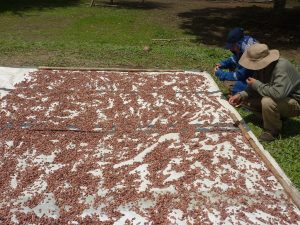
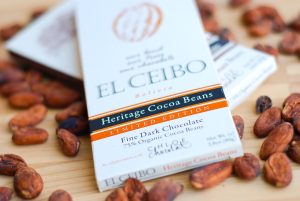
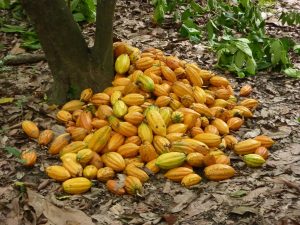
Cocoa cultivation and harvesting in Bolivia are carried out by indigenous communities, particularly in the regions of La Paz and Beni. These communities have a deep understanding of the land and its resources, employing sustainable farming practices that ensure the preservation of the environment.
The World Conservation Society (WCS) has been actively involved in supporting indigenous communities in managing cacao stands and improving the entire process, from harvesting to post-harvest treatment. This support includes providing technical assistance in crop management and post-harvest processes, which helps indigenous farmers achieve the required quality for special markets.
In addition to cultivated cocoa, Bolivia has vast areas of wild cacao, particularly in the Amazon forests of northern Bolivia. Indigenous peoples have been harvesting wild cocoa beans from these natural habitats for centuries. The wild cocoa beans have a unique flavor profile and contribute to the distinctiveness of Bolivian chocolate. The preservation of these wild cacao stands is essential for maintaining biodiversity and ensuring the long-term sustainability of the chocolate industry in Bolivia.
For example, the Rio Beni region in Bolivia is known for its wild cocoa trees. The Beniano cocoa, grown in the plains of Gran Moxos in the Beni Department, is highly regarded for its exceptional quality and flavor. The indigenous communities in this region have been the custodians of these precious cocoa trees for generations, preserving their traditional knowledge and practices.
Unique Characteristics of Bolivian Chocolate
Bolivia is known for its unique type of cocoa called Beniano. This cocoa variety contributes to the distinct flavor profile of Bolivian chocolate.The Beniano cocoa beans are smaller than typical cacao beans but higher in cacao butter, resulting in a creamy chocolate bar with a gentle, complex, and earthy flavor. The flavor of Bolivian chocolate also has a hint of dark honey, adding to its unique taste.
The unique characteristics of Bolivian chocolate are a result of several factors. The specific cocoa variety, combined with the terroir of the region and the post-harvest processes employed, contribute to the flavor profile. The wild cocoa beans harvested in Bolivia have a different flavor compared to beans cultivated in other regions. This distinctiveness makes Bolivian chocolate highly sought after by chocolate connoisseurs who appreciate the complexity and uniqueness of its flavor.
For instance, Sol del Cacao, a Bolivian chocolate company, produces chocolate bars using wild cocoa beans from the Amazon rainforest. Their chocolate showcases the distinctive flavor profile of Bolivian cocoa, with its earthy notes and subtle hints of dark honey. The company’s commitment to preserving the biodiversity of the Amazon rainforest and supporting indigenous communities further enhances the appeal of Bolivian chocolate.
Challenges in the Chocolate Industry in Bolivia
Despite the success and potential of the chocolate industry in Bolivia, there are several challenges that need to be addressed to ensure its long-term sustainability. One of the significant challenges is deforestation in Bolivia’s Amazon Basin. Deforestation not only affects the natural habitat of cocoa trees but also disrupts the delicate balance of the ecosystem. It is crucial to find sustainable solutions to prevent further deforestation and protect the biodiversity of the region.
Protected areas in Bolivia, including national parks and communal lands, are particularly vulnerable to encroachment by loggers and farmers. These activities pose a threat to the natural habitats of cocoa trees and other wildlife. Balancing the needs of economic development and environmental conservation is a complex challenge that requires collaboration between government authorities, local communities, and organizations working in the chocolate industry.
Another challenge in the chocolate industry in Bolivia is the transition from coca production to cocoa production. Coca, the plant used to produce cocaine, has been a significant agricultural crop in Bolivia. However, the Bolivian government has been encouraging farmers to switch from coca to cocoa production as part of its efforts to combat drug trafficking. While this transition presents opportunities for the chocolate industry, it also requires support and resources to ensure the successful integration of farmers into the cocoa value chain.
For instance, the conversion of coca fields to cocoa plantations offers an alternative livelihood for farmers. By cultivating cocoa, farmers can contribute to the legal and sustainable production of a valuable commodity, supporting the growth of the chocolate industry while reducing the negative impact of illicit coca production.
Opportunities in the Chocolate Industry in Bolivia
The chocolate industry in Bolivia offers several opportunities for growth and development. Bolivian chocolate has already found a niche market demand both domestically and internationally. The unique flavor profile and high-quality products of Bolivian chocolate attract consumers who appreciate the distinctiveness of Bolivian cocoa. This demand presents an opportunity for the domestic market to expand further, satisfying the growing appetite for high-quality chocolate.
Participation in the chocolate industry can provide a pathway to increased income for cacao producers, contributing to the economic development of local communities. By supporting sustainable farming practices and improving the post-harvest processes, the chocolate industry can create employment opportunities and improve the livelihoods of farmers. Additionally, the growing international demand for Bolivian chocolate presents export opportunities, promoting economic growth at a national level.
For example, the Bolivian company El Ceibo has been successful in promoting fair trade practices in the chocolate industry. They work directly with small-scale cocoa farmers, ensuring they receive fair prices for their produce. This approach not only benefits the farmers but also promotes sustainable cocoa production and supports the growth of the chocolate industry in Bolivia.
Furthermore, the chocolate industry in Bolivia can benefit from collaborations and partnerships with international chocolate companies. By working together, Bolivian chocolate producers can access new markets, leverage expertise, and enhance their production techniques. These collaborations can contribute to the growth and development of the chocolate industry in Bolivia, opening up new opportunities for cocoa farmers and chocolate manufacturers alike.
Process of Making Bolivian Chocolate



The process of making Bolivian chocolate involves several stages, each carefully executed to create the distinctive flavor and texture of the final product. After the cocoa beans are harvested, they undergo various post-harvest processes to achieve the required quality.
The first step is fermentation, where the cocoa beans are placed in containers or banana leaves to ferment for a specific period. Fermentation is a crucial step as it develops the flavor and aroma of the chocolate. Proper fermentation helps break down the sugars and acids in the cocoa beans, enhancing the overall taste.
After fermentation, the beans are spread out to dry, either under the sun or using specialized drying equipment. Drying ensures that the moisture content of the beans is reduced to a suitable level for further processing. Proper drying is essential to prevent the growth of mold and ensure the preservation of the cocoa beans.
Once the beans are dry, they are roasted to bring out the chocolate’s characteristic flavors. Roasting is a delicate process that requires careful control of time and temperature. The roasting process can vary, depending on the desired flavor profile. Lighter roasts preserve more of the bean’s natural fruity and floral flavors, while darker roasts create a richer and more intense chocolate flavor.
After roasting, the beans are ground into a paste called cocoa liquor. This paste is then further processed to separate the cocoa solids from the cocoa butter. The cocoa solids are finely ground to create cocoa powder, while the cocoa butter is used to give the chocolate its smooth and creamy texture.
The final step in the process is conching, where the chocolate is continuously stirred and heated. Conching helps refine the texture of the chocolate, making it smooth and velvety. This process can take several hours or even days, depending on the desired outcome. Once the conching is complete, the chocolate is tempered, poured into molds, and left to cool and solidify.
Cultural Significance of Bolivian Chocolate
Chocolate holds a significant place in Bolivian traditions and celebrations. It is not only enjoyed for its taste but also symbolizes cultural heritage and national identity. Bolivians have a deep appreciation for the historical and cultural significance of chocolate in their society.
The flavor of Bolivian chocolate reflects the taste of cacao at the time of Bolivia’s independence in 1825. This historical connection adds a unique cultural dimension to the chocolate experience. Bolivians take pride in their chocolate and often use it as a way to connect with their roots and celebrate their traditions.
For example, during the annual Carnival festival in Bolivia, chocolate plays a central role in various traditional dances and rituals. The Yampara culture, native to the region of Tarabuco, celebrates with a dance called the Pujllay, where participants exchange chocolate as a symbol of friendship and unity. This cultural significance highlights the deep-rooted connection between chocolate and Bolivian traditions.
Furthermore, Bolivian chocolate is not only appreciated within the country but also internationally. The unique flavors and high-quality products have gained recognition in the global chocolate market. Bolivian chocolate companies, such as Para Ti, have received prestigious international awards for their outstanding craftsmanship and dedication to preserving the cultural heritage of Bolivian chocolate.
Bolivian Chocolate in the Market
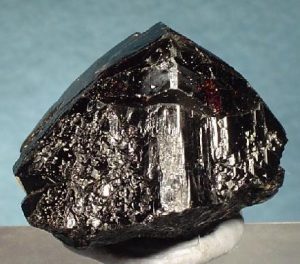

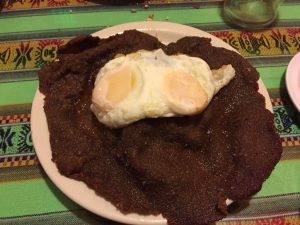
Bolivian chocolate has gained recognition in the international market for its unique flavor profile and aesthetic packaging. Companies like Fruition Chocolate, based in upstate New York, source rare cacao beans from the wild forests of Itenez in Bolivia. These beans are hand-gathered by indigenous people and carefully processed at Hacienda Tranquilidad, ensuring the preservation of the flavor and quality.
The demand for Bolivian chocolate has seen a notable increase, especially in niche markets that appreciate the distinct flavors and quality. Bolivian chocolate’s unique characteristics, such as its earthy taste and subtle hints of dark honey, make it stand out among other chocolate varieties. Consumers who value the craftsmanship and ethical sourcing of chocolate are drawn to Bolivian chocolate.
To meet the growing demand, Bolivian chocolate companies have expanded their operations and improved their distribution networks. They have also focused on enhancing the visual appeal of their products through aesthetic packaging. The combination of high-quality chocolate and visually appealing packaging has made Bolivian chocolate a sought-after product in the market.
For example, Maraná, a Bolivian chocolate brand, has gained international recognition for its commitment to preserving the natural flavors of Bolivian cocoa. Their chocolate bars not only showcase the unique taste of Bolivian chocolate but also feature stunning packaging inspired by traditional Bolivian art and culture.
Conservation and Income Generation through Chocolate Production
Wild cocoa production in Bolivia not only contributes to the chocolate industry but also plays a role in conservation efforts. The preservation of natural Amazon forests is crucial for maintaining biodiversity and mitigating the effects of climate change. By cultivating wild cocoa within these forests, local communities generate income while protecting the environment.
Wild cocoa is produced within protected areas in Bolivia, such as the Madidi National Park and Pilon Lajas communal lands. The sustainable harvesting of wild cocoa beans provides economic opportunities for local communities, supporting their livelihoods and contributing to the conservation of these valuable ecosystems.
The Conservation Strategy Fund (CSF) has been actively involved in supporting sustainable chocolate production in Bolivia. Through their Wild Chocolate project, they aim to test the feasibility of chocolate bars made from wild cocoa beans in the domestic market. The project includes research on the variability of native cacao and the development of a management plan for wild cocoa. Preliminary results have shown significant demand for these chocolate bars, indicating the potential for income generation and conservation impact.
By supporting sustainable chocolate production practices, consumers can contribute to both conservation efforts and income generation for local communities. Choosing chocolate made from ethically sourced cocoa ensures that the production process aligns with environmental and social sustainability principles.
For instance, Chocolates Para Ti, a Bolivian chocolate company, has been actively involved in conservation initiatives. They work closely with local communities to ensure the sustainable harvesting of cocoa, while also implementing reforestation projects to restore degraded areas. By purchasing their products, consumers support these conservation efforts and contribute to the well-being of both people and the environment.
Where to Find Wild Bolivian Chocolate Bars
If you’re looking to experience the unique flavors of Bolivian chocolate, there are several options available. Companies like Fruition Chocolate, based in upstate New York, source rare cacao beans from the wild forests of Itenez in Bolivia. Their chocolate bars are made with hand-gathered cocoa beans, resulting in a truly authentic Bolivian chocolate experience.
Another option is to explore local Bolivian chocolate brands. Bolivian companies such as Sol del Cacao and Para Ti produce high-quality chocolate using cocoa sourced from indigenous communities in Bolivia. These brands offer a range of chocolate bars, each with its distinct flavor profile that showcases the diversity of Bolivian cocoa.
You can also consider visiting specialty chocolate shops or online retailers that carry Bolivian chocolate. These stores often curate a selection of unique and artisanal chocolates from around the world, including Bolivian varieties. By supporting these retailers, you not only get to savor the flavors of Bolivian chocolate but also contribute to the economic development of local communities in Bolivia.
In conclusion, chocolate production in Bolivia is an integral part of the country’s culture and economy. The unique characteristics of Bolivian chocolate, combined with the commitment to sustainable farming practices, contribute to the success and recognition of the chocolate industry. By supporting Bolivian chocolate, consumers can indulge in the distinct flavors while contributing to the preservation of traditional farming practices, the conservation of ecosystems, and the well-being of indigenous communities. So, the next time you savor a piece of Bolivian chocolate, remember the rich history and cultural significance behind it.

